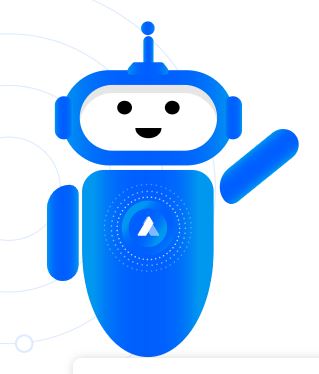Kayla Matthews
Kayla Matthews is a digital marketing and business writer who has written for sites like Marketing Dive, Contently and PR Newswire. To see more of her work, follow her on Twitter or subscribe to her tech blog, ProductivityBytes.com
Every design narrates a story. Powerful storytelling demands you to use visual and user interface design to build something that people want to interact with.
The internet is so vast that people who get bored online can find more interesting content in a matter of seconds. If your website doesn't meet their needs, they'll go elsewhere and may not return.
However, by building an interactive site, you could keep them engaged. This means that before your audience has a chance to increase your bounce rate, they’ll remain on your pages and engage with your awesome content. All you need to do is implement interactive elements onto your site to ensure audiences have a chance to do so.
Here are six components of a successful and engaging website:

People typically appreciate information that's relevant to their geographic areas. By adding it, you could increase the percentage of nearby customers who do business with you.
Website designers should consider ways to localize their content and cater to people no matter where they live. For example, if you have international visitors, think about having an instant translation or currency conversion features embedded into the website. Those language and price clarifications could assist customers so they don't get frustrated and leave.
You may have blog content related to local events, weather patterns or trends. Taking that approach gives people the impression you're in tune with what's happening.
An interactive map feature could also help people find store locations closest to them or give turn-by-turn directions to a special event, such as a conference hosted by your company. Fortunately, website creators do not need map-making skills to create this kind of interactive website addition. Plugins exist that allow pasting in a piece of code when working with the back end of the website.
It's also smart to use search engine optimization (SEO) strategies when adding local content to your site. Then, you can tailor the material to the keywords that people search for before ultimately landing on your site. You may have a website for a dance studio and find most people come to the site after entering branded keywords.
That's good because it means you achieved name recognition. But, perhaps they also use phrases like "jazz dance classes in [city]."
Incorporate the keyword research you find into your local content, but always do so naturally. SEO is vital for helping you rank, but you don't want to overuse keywords or insert them in ways that seem forced and take away from the usefulness of the content. The keywords should not interrupt the overall flow of the piece or be so obvious that people focus on them and get distracted.
Subscription-based content allows people to indicate they want to stay in touch with your brand. One of the perks of a contact form is that it enables companies to have open lines of communication without publishing their email addresses. Having a visible email address may lead to more spam from bots.
Marketers could also encourage people to sign up for email lists by offering incentives like e-books or merchandise discounts in exchange. Built-in marketing tech that monitors when a person moves to click away from a website and displays a pop-up window before that happens could promote positive responses from visitors by catching them in time.
When a contact form doesn't initially give the expected results, tweaks could help. In one case study, a company made relatively small changes to the functionality, text and colors on its form and saw a 55% increase in conversions.

Marketers can urge visitors to get involved with their content by making it possible for people to give their thoughts via comments. Then, it's easier for a website manager to know what's working and what isn't.
However, be aware that having commenting turned on could increase your moderation obligations, especially when screening for inappropriate comments. Fortunately, you can add administrator tools that check for any words or phrases you blacklist. Those comments then go into a queue for you to examine later.
When replying to a comment, use a tone that matches your brand. Also, be open to constructive criticism and acknowledge that you'll take the feedback into account. Ongoing dialogue can bring new life to the published content. Plus, people who feel ignored after making valid comments may decide that despite all the interactive website features you offer, your internet destination is not worth their time.
If people come to a website that has primarily outdated content, they likely won't find it appealing, even if you have various interactive features. Updated content brings numerous advantages, including better search engine rankings, a stronger brand personality, and improved engagement.
Customer testimonials, how-to videos and infographics are a few examples of material that could resonate with your audience. You could also run polls on social media to ask people what kind of content they prefer.
Updating your website this year is crucial, but the task may not be as hard as you think. Begin by looking at your existing content — especially the posts with the highest past performance rates. Could you freshen up old content to make it more applicable to today's readers? Another option is to research the competition and see which of their published content performs best.
If it's difficult to keep adding new material to your blog on a regular schedule, consider recruiting guest bloggers. When doing that, be extremely clear about the kind of content you want and perhaps prioritize people who visit your site often and are familiar with it. Giving your guest bloggers a style guide to follow also ensures consistency.

Social media buttons within your content can encourage people to share it, giving your interactive website more momentum. Research shows it's best to place social media buttons about halfway through the material. By that time, viewers have engaged with it enough to want to spread the word to others.
Various apps and tools let you integrate buttons into your interactive website in a few clicks. Some button designs show the number of times people shared a piece of content. That numerical element could make fellow visitors realize others felt the information was worthy of sharing, spurring them to do the same.
However, if you put social media buttons on your site, make sure the feeds associated with them get updated regularly. Assuming you have a social media presence on several platforms, consider using a social media management tool that sends newly published content to all of them simultaneously. Pay attention to the social media content that receives the most shares and plan your future content strategies accordingly.
The tip above about replying to comments as a way to engage with brands also applies to social media. A 2017 study from Sprout Social found that answering a customer's question on social media prompted 48% of people to make purchases.
You may even tie your response back to your interactive website, driving more traffic to it. For example, a person might ask you for more details about how to use a product you sell, providing an opportunity to direct them to a how-to video posted there.

Chatbots are among the newest interactive website features, but people quickly got on board with the technology. According to one expert, chatbots will become more popular than websites and eventually replace them. People are increasingly comfortable with chatbots and find them user-friendly. They also let website visitors get answers to questions outside of operating hours.
Many services also allow people to build chatbots with little or no tech knowledge. Before creating a chatbot, make sure yours serves a valid purpose and helps or entertains users.
Start by determining what business needs you have and how a chatbot might help meet them. Marketing analytics tools can tell you which sections of a website people visit most, what they do there and what questions they typically ask your company's support teams. That information could steer your chatbot-related decisions.
You might also discover that a chatbot helps you find more qualified leads. A company called Perfecto Mobile found that many of the visitors that came to their site, and initially viewed as leads, were not well-qualified because they didn't come from places that fit Perfecto Mobile's business model. But, the enterprise used a chatbot on its website to assess leads before those people went through the channels of the salespeople.
After using the chatbot for six months, the company's visitor-to-lead conversion rate climbed by 20%. That's a fantastic example of how a business examined a known problem and how a chatbot could help them overcome it, then saw relatively quick success from their efforts — in only three months, Perfecto Mobile already noticed a conversion rate boost of 4%.
People expect interactive websites to improve their online experiences. The suggestions mentioned here provide companies with guidance as they figure out which features will interest their audiences and keep them coming back.
Author: Kayla Matthews
You’ll also receive some of our best posts today

Kayla Matthews is a digital marketing and business writer who has written for sites like Marketing Dive, Contently and PR Newswire. To see more of her work, follow her on Twitter or subscribe to her tech blog, ProductivityBytes.com
If you use data analytics, you know what people...
E-Commerce sales are growing at an astounding rate. $3.5...
There is no secret formula to optimizing your content...

User reviews are a game-changer for e-commerce. Consumers rely heavily o...
Don’t miss the new articles!